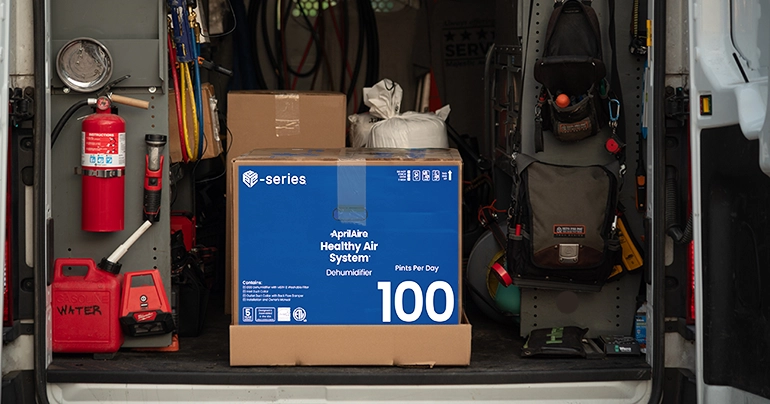Crawl Space Dehumidification: Can It Get Too Dry?
3 minute read
With a wealth of experience in the waterproofing industry, Erin B. of Dry Otter Waterproofing shares her valuable insights regarding dehumidification in below-grade spaces.
A few years back, I worked as a customer care representative at a crawl space and basement waterproofing company. I set appointments for free foundation inspections, set up service appointments, and fielded calls from current customers. One question kept popping up. They wanted to know—since we installed a dehumidifier in their newly encapsulated crawl space, would it dry out too much? Would the wooden floor joists in their crawl space get so dry they would crumble? Yikes! That was a question I didn’t have the answer to. As a former science educator, it hurt to not have an answer to such an honest and inquisitive question. It makes sense—we’re drying out the crawl space—wouldn’t it be possible?
While my experience in science education caused my frustration, it also came to the rescue in helping find an answer. The AprilAire Dehumidifiers our team installs in crawl spaces have a digital screen that shows the relative humidity. Relative humidity is a way of describing how much moisture is in the air compared to how much moisture the air can hold at a certain temperature. It’s expressed as a percentage, so when we say the relative humidity is 50%, it means the air is holding half of the water vapor it’s capable of holding at that temperature. The optimal relative humidity level is between 40 and 60%. If a space is too damp, mold will begin to grow.
I discussed with the experts at AprilAire how they prevent the crawl space from getting too dry. AprilAire Dehumidifiers are equipped with sophisticated controls and sensors that regulate moisture in the air based on relative humidity and dew point. The dew point is the temperature at which air can no longer hold all its water vapor, which then condenses as liquid droplets.
As relative humidity is based on temperature, it can be misleading when the temperature drops. Dew point is a more accurate metric for determining the moisture content of the air. Dehumidifiers not operating off dew point, like most portable models, will run constantly because they are tricked into thinking that a high RH percentage means it’s too wet, which isn’t the case. Because of this, the unit will be working as hard as it can to dry air that is already dry. This leads to a higher energy bill, an overworked compressor, and perhaps the coils of the unit freezing solid.
To combat these concerns, AprilAire Dehumidifiers will turn off automatically when the temperature is below 50 degrees or when the dew point is below 40 degrees. This is exactly the answer I was looking for. Thanks to the innovation of AprilAire Dehumidifiers, your below-grade spaces will be safe.
Learning the ins and outs of AprilAire Dehumidifiers really put my mind at ease. I now understand that we can dehumidify crawl spaces to prevent pests, mold, and provide better Indoor Air Quality without over drying the wood that makes up the foundation or causing further headaches for the homeowner.
About Erin
With expertise in both science and marketing, Erin brings a diverse perspective to her current role. She’s not just passionate about her work; outside the office, Erin loves crafting, hunting for vintage thrifts, and cherishing moments with her husband and little boy. Driven by a mission to educate people about all things interesting – from the wonders of nature to the critical importance of maintaining a dry foundation – Erin weaves her knowledge and passions into her writing, offering readers both informative and engaging content.
